Review by Pete Vack
Friend and countryman John Wright has now completed the definitive and thoroughly interesting biography of Bill Sadler (1931-2022) and his cars, a project years in the making and a labor of love. Wright reveals an often difficult man, both burdened and blessed by a superior intelligence.
He was, for example, a bit of a genius; though no IQ scores are mentioned, Bill was bored with school, much happier building radios and helping his father in the family’s electrical shop in St. Catharines, Ontario, a small town near Toronto. He dropped out and only decided to go back to college to get his BS and master’s degrees (from MIT!) when in his thirties, and spent much of his life with firms such as General Dynamics involved with military aeronautics and the occasional spook projects. Married three times, in his later years he remarried his first wife, an unusual situation in anyone’s book. When collector Dean Butler invited Sadler to his home in 2005 to build the Majzub Mark III, he found that Sadler preferred to work alone for long hours and to be alone when not working.
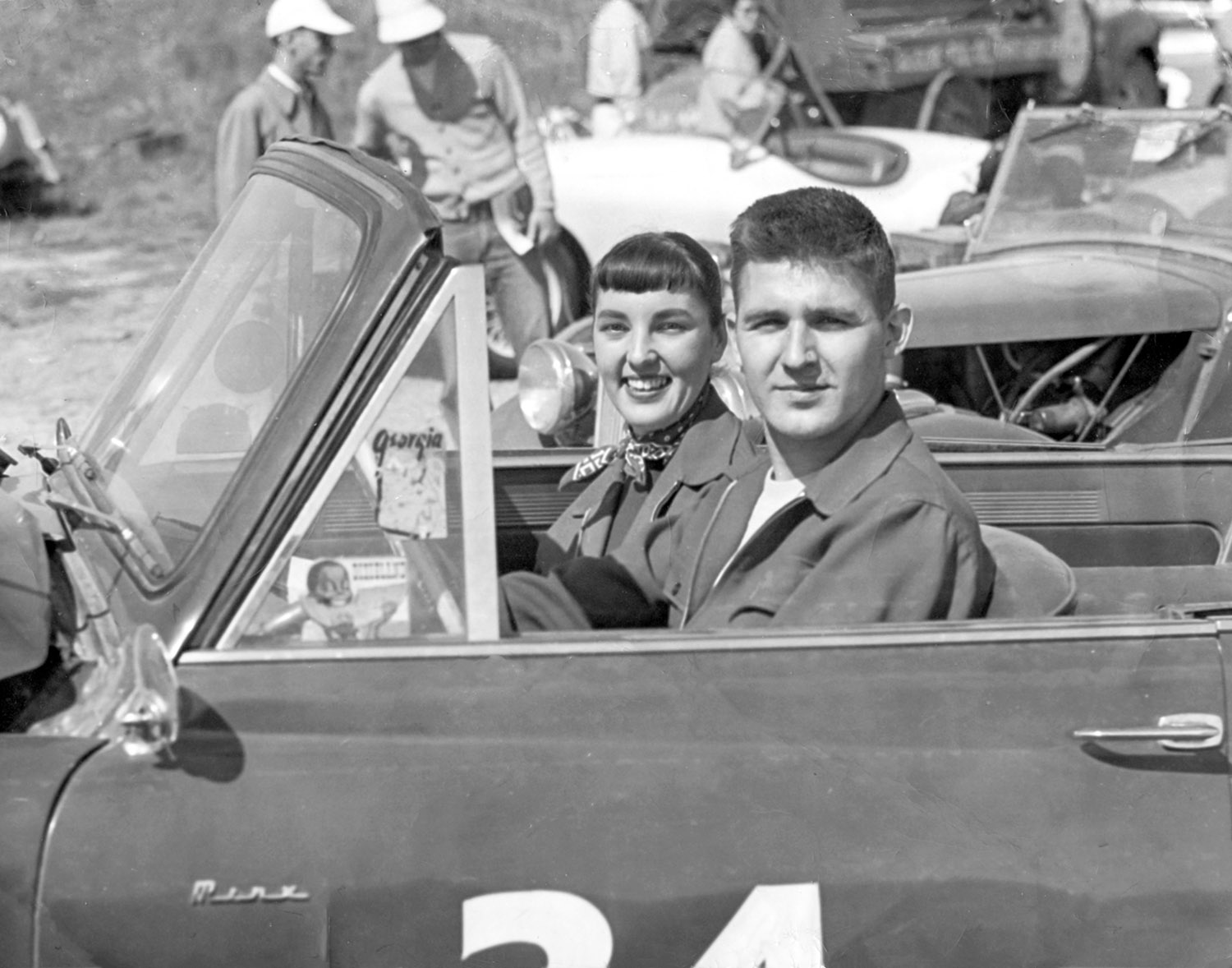
Sadler and wife Anne in his first race car, a Hillman Minx with a Ford V8. He entered it at Watkins Glen in 1953 and campaigned it for several seasons thereafter. It was a true dual purpose car that Bill and Anne used as a daily driver as well.
Wright’s book is also a comprehensive look at each one of the Sadler cars…more than we had realized. His first was a Hillman Minx. Convertible. With a Ford flathead. He entered it in the 1953 Watkins Glen event. This hooked him on the growing sports car movement and he planned a totally new car, this time with a Jowett engine followed by a Triumph which may have had his own fuel injection system before being replaced by the new Chevy V8. Sadler was one of the first to use the fantastic new Chevy engine in a sports racer, and would remain faithful to Chevy power for all but his Formula Juniors.
The Sadler Formula Juniors were a change from the more familiar MK series as about 12 constructed, all front engined, placing the engine at a 15 degree angle to the chassis centerline allowing for a low seating position. They were reasonably successful but just a little to late.
But to be frank, his cars, though well-engineered and advanced, were not consistent winners, but still garnered a lot of attention from a variety of magazines and, no doubt, race organizers. Sadler was one of the few race cars that were designed and built in Canada. They were attractive, fast, technically interesting and found new lives with the increasing popularity of vintage car racing in the 1980s. To nutshell the Sadler story, we need only to look at the Sadler cars in cutaway.
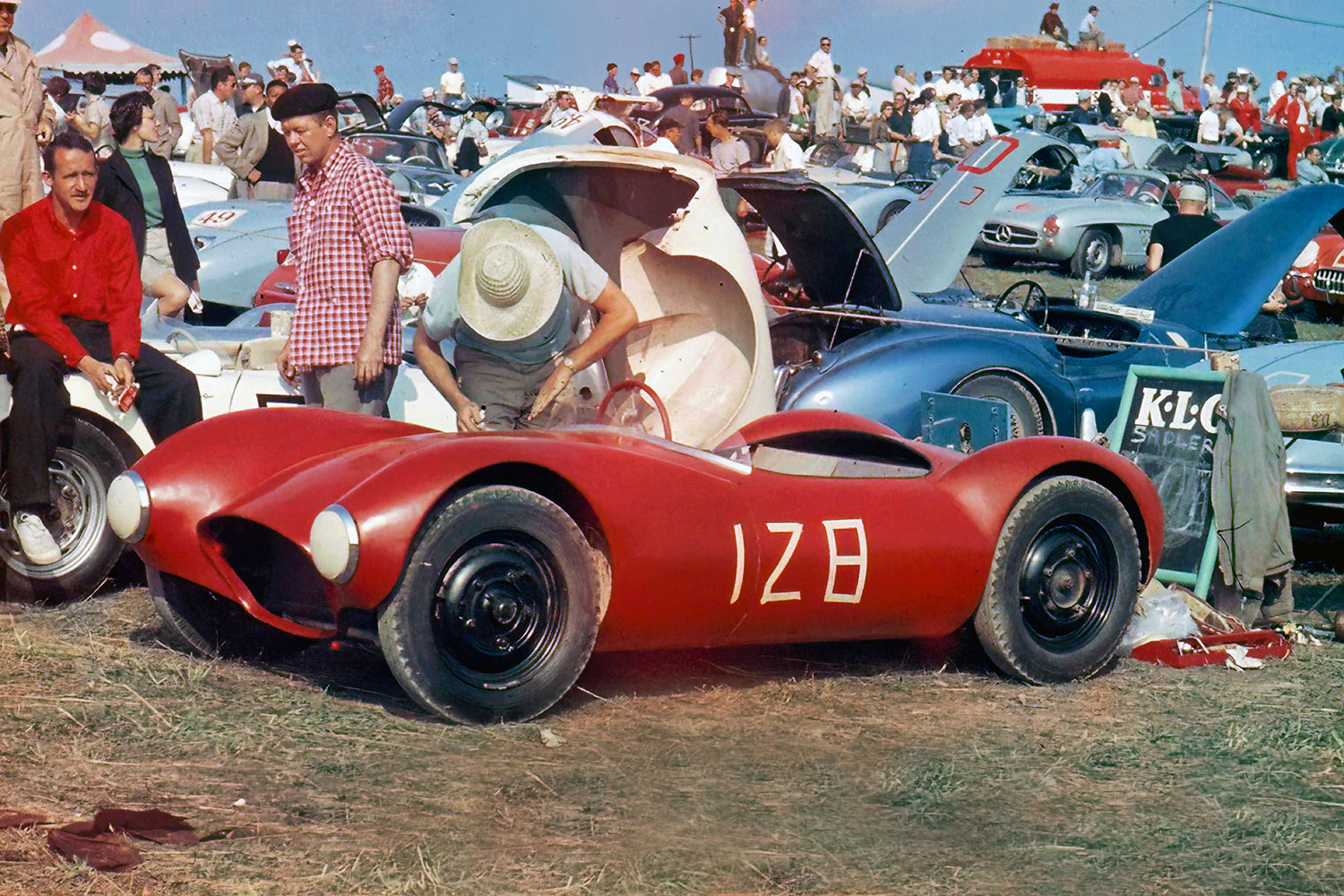
The first Sadler special was the MK I, which began life as a Jowett-Javelin powered cycle fendered race car, then equipped with a Triumph TR2 engine and envelope body, and finally used as a test bed for the new Chevy 265 V8. The chassis could deal with the extra power, and the MK II was born. Here it is at Watkins Glen in 1955.
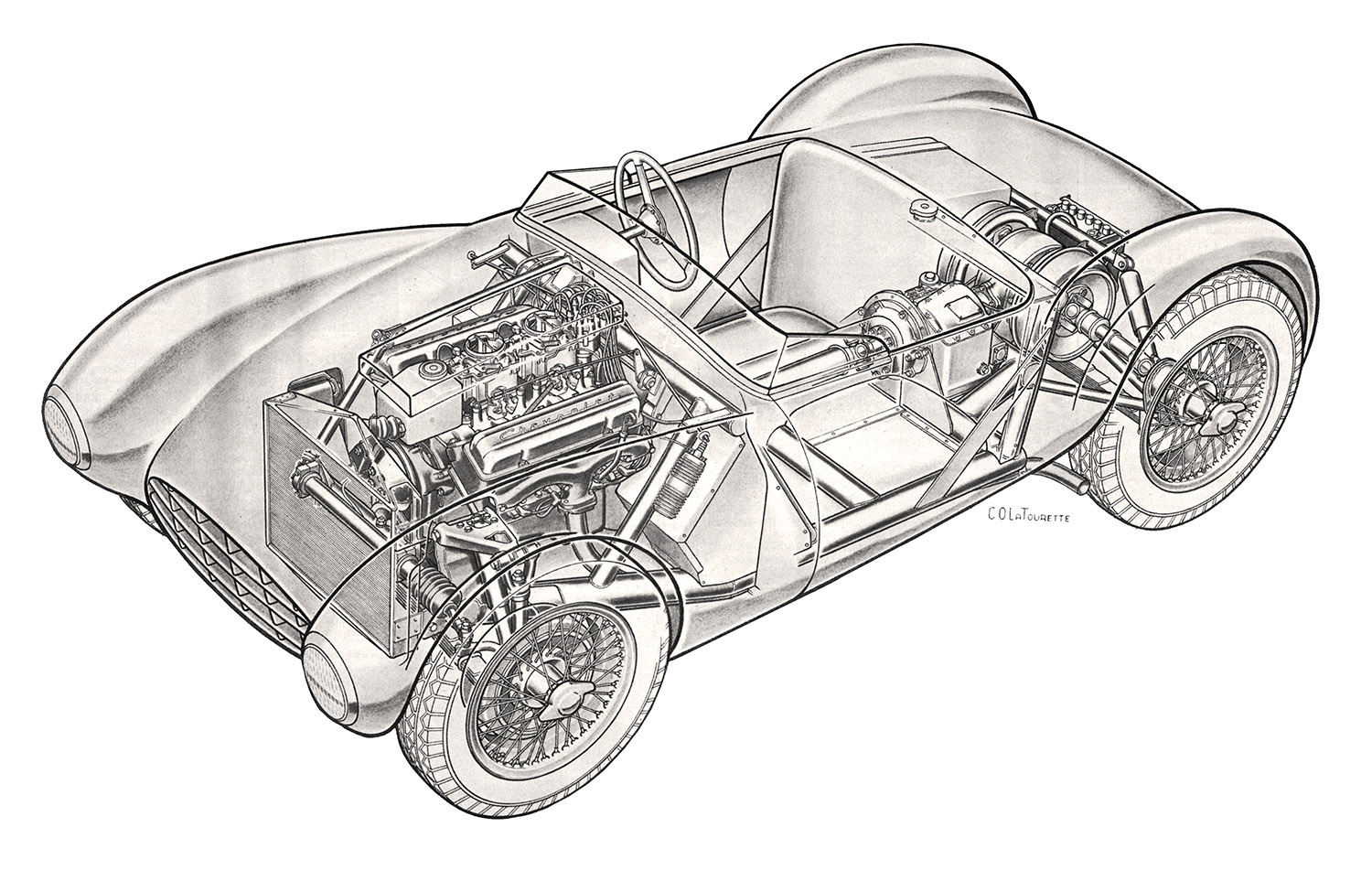
According to Sadler: “For 1955-56 I thought I had better design a car specifically for the Chevrolet V8, and a key was an independent rear suspension for better handling. I took an ENV pre-selector gearbox, got a 1940 Ford rear end, and coupled them together for a modified rear end. Thus I had a preselector gearbox transaxle.” The result was the MKII Sadler, the most successful Sadler built.
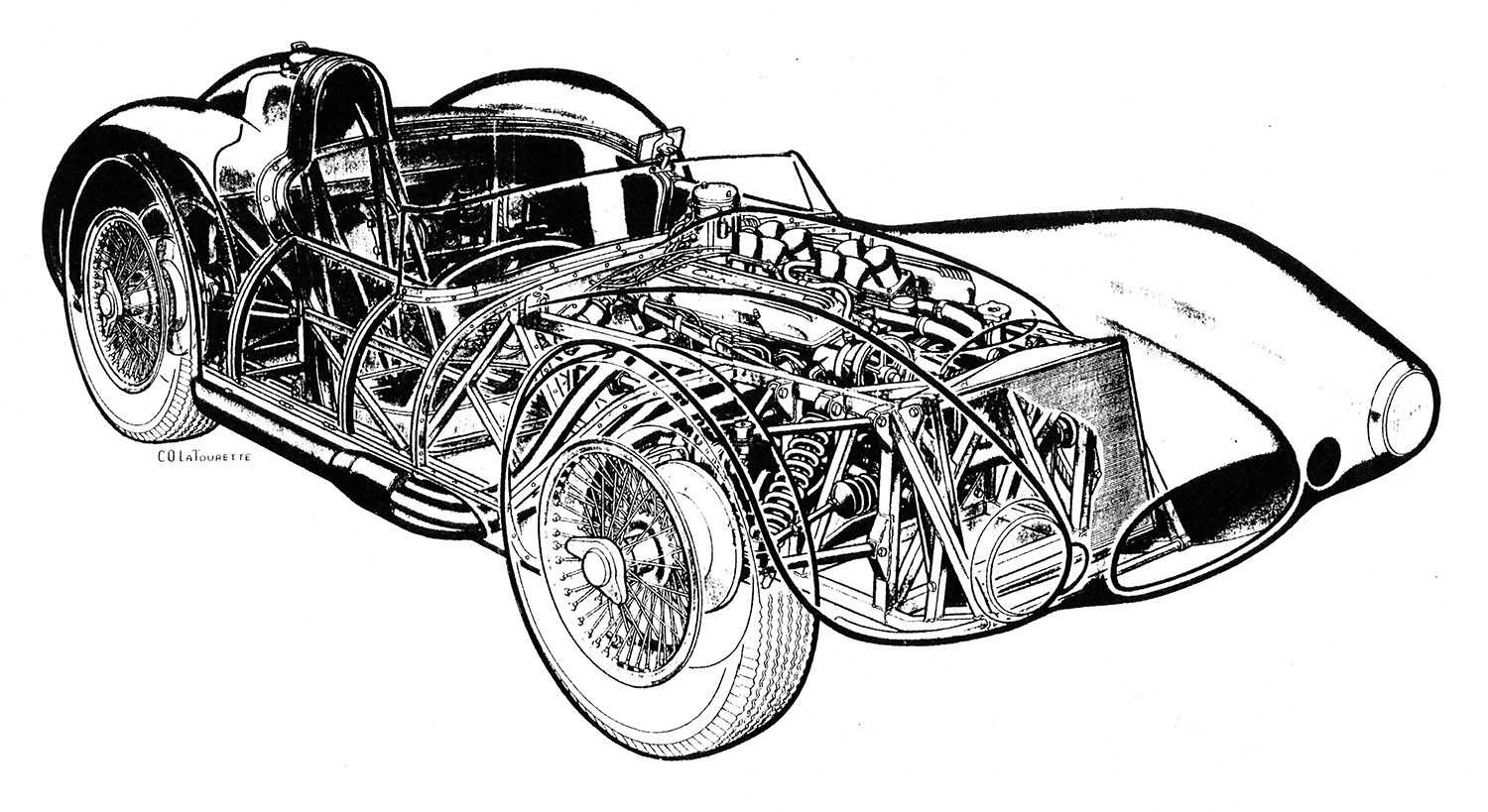
The MK III was commissioned by Earl Nisonger of KLG, who sponsored Bill’s 1959 effort. Staying with the Chevy, the frame went from large tube ladder construction to a more modern space frame with square section tubing. Rear suspension was a low pivot IRS with trailing arms. It did not fare as well as the previous MK II however.
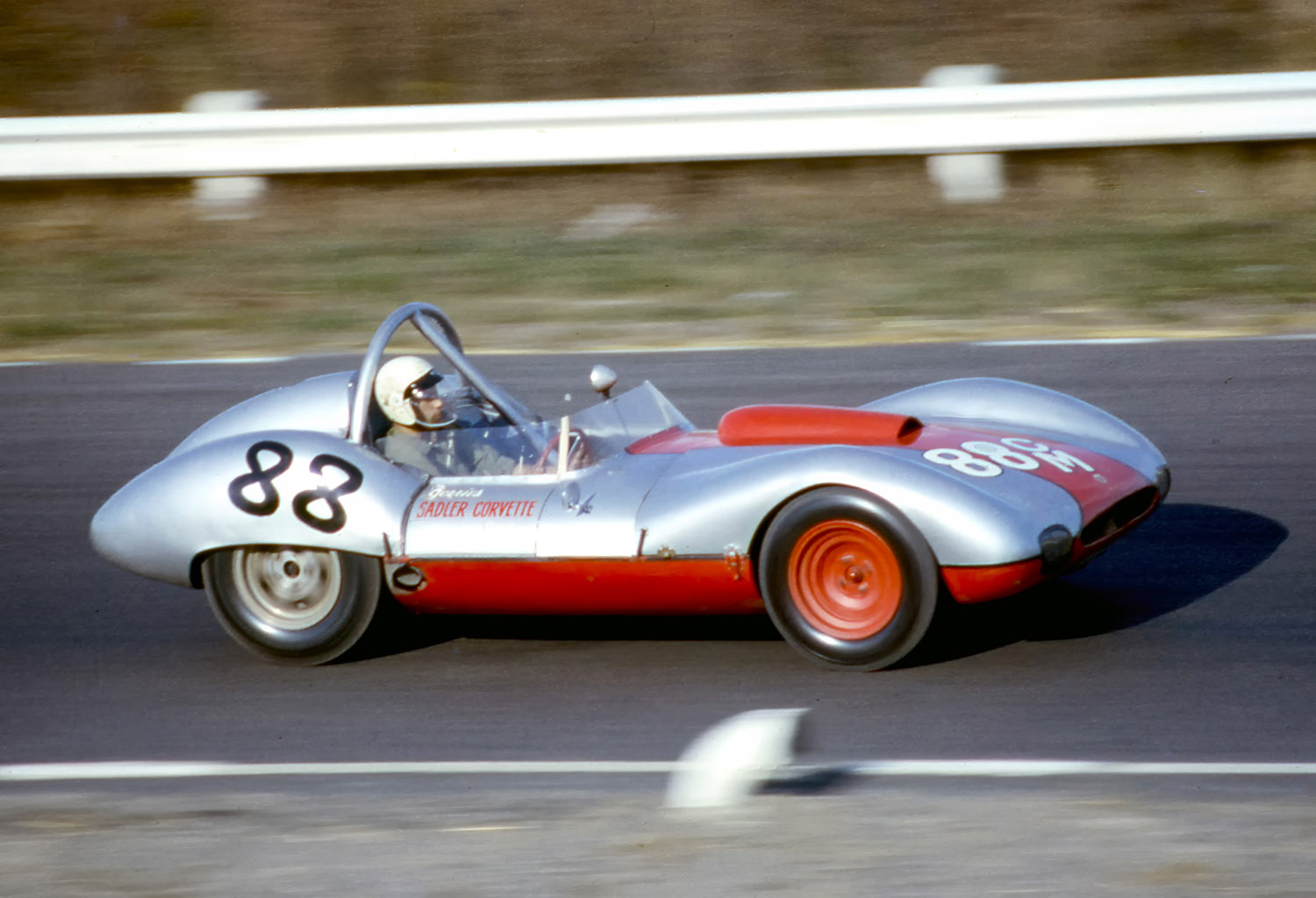
The confusing and complex life of the MK IV Sadlers is explained in detail in Wright’s book. Several were built with E Type Jaguar front and rear suspensions, along with the Chevy engine and GM T10 transmissions. These were also known as the Dailu and Dailu Bardhal specials. Pictured is a Sadler MK IV at the Glen in 1960, driven by Dave Greenblatt in the Formula Libre race.
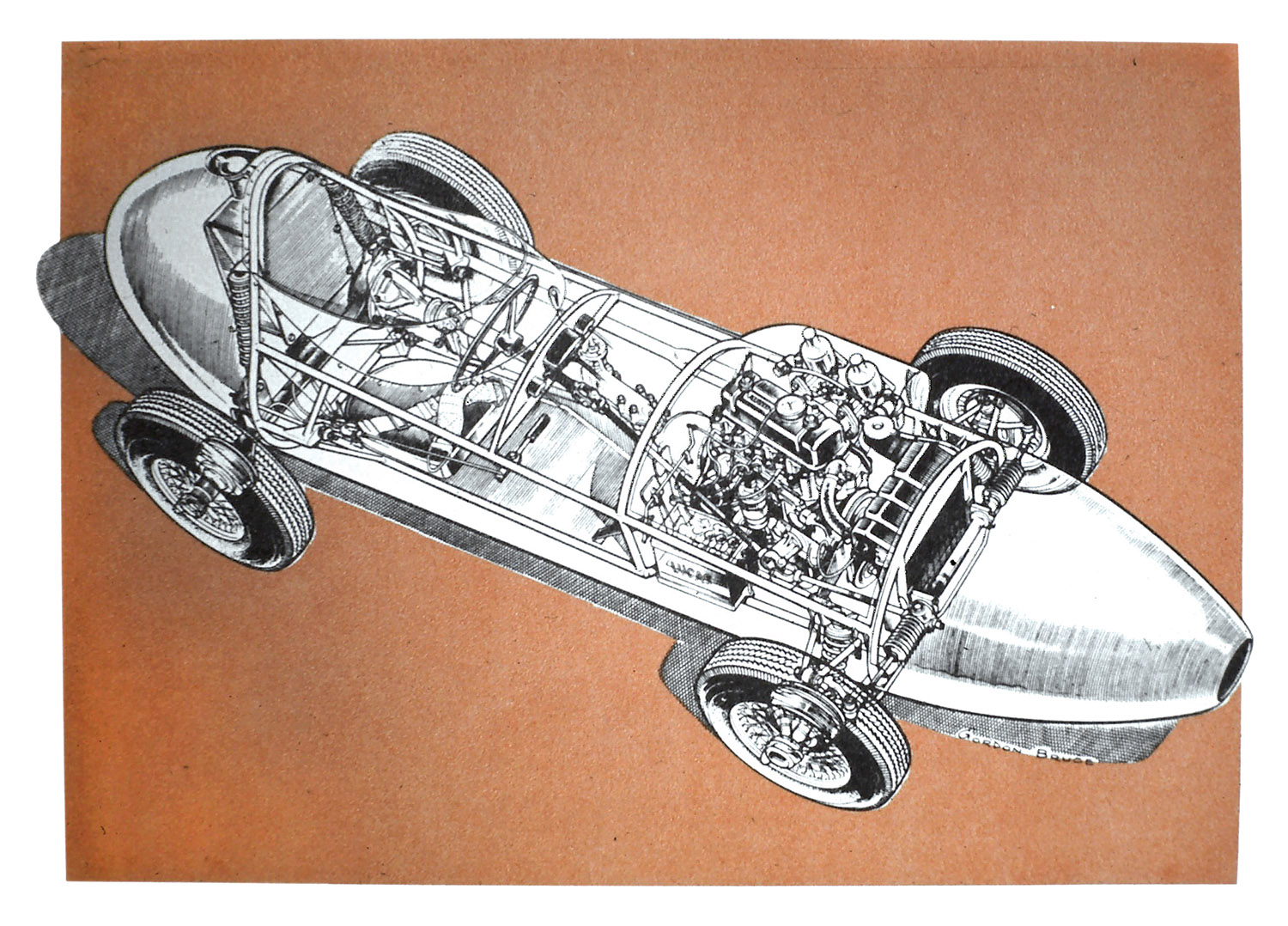
Sadler also became interested in the new Formula Junior, building 12 examples of a front-engined Junior using Austin Healey Sprite components and engine. Note the unusual drivetrain arrangement. Five are known to exist today.
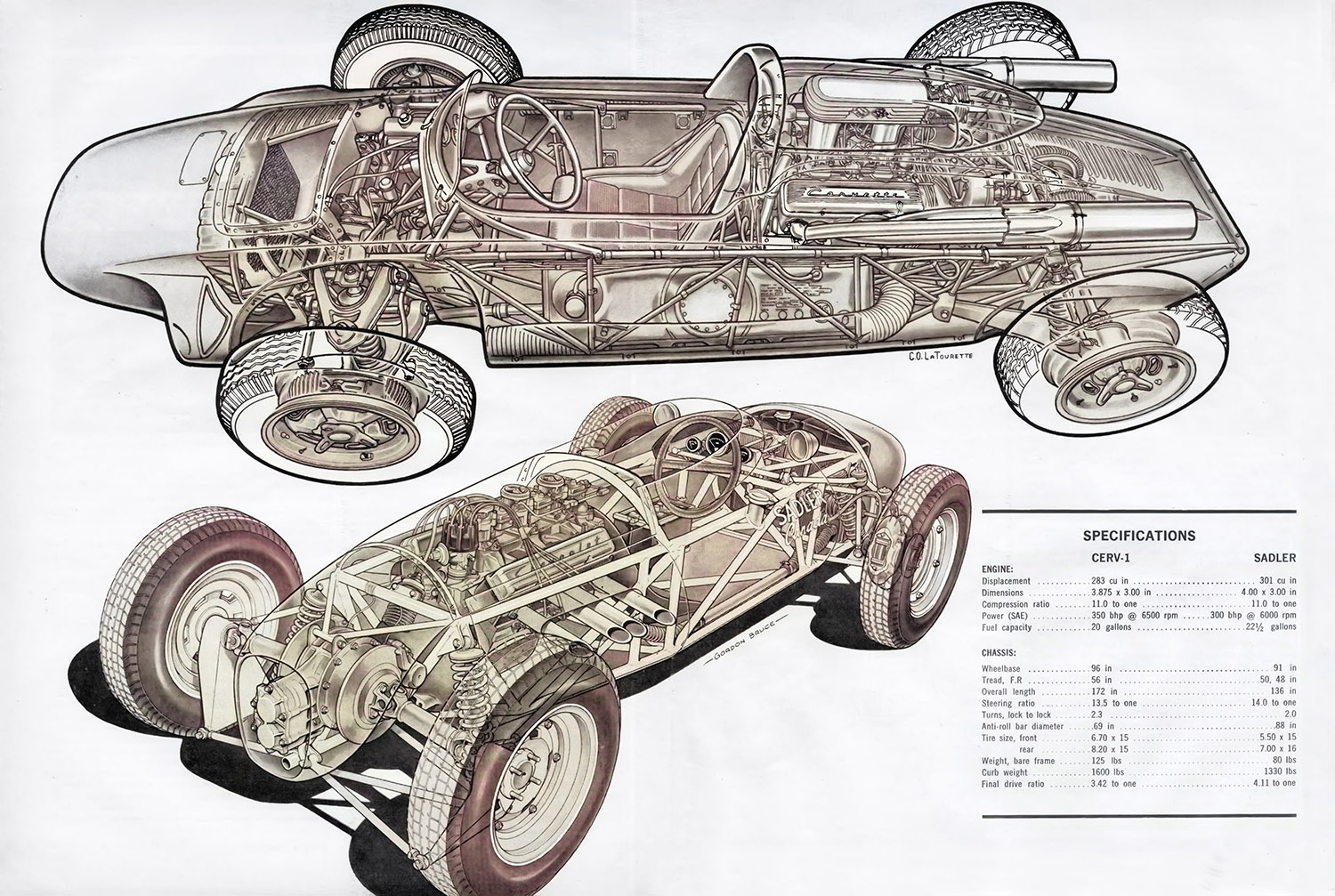
Sadler’s mid-engined 1960 Formula Libre car (bottom) was introduced at the same time as the Chevy CERV-1 (top) and both were featured in an article in Sports Cars Illustrated. It served as a rolling test bed for Sadler’s later mid-engined cars such as the MK V.
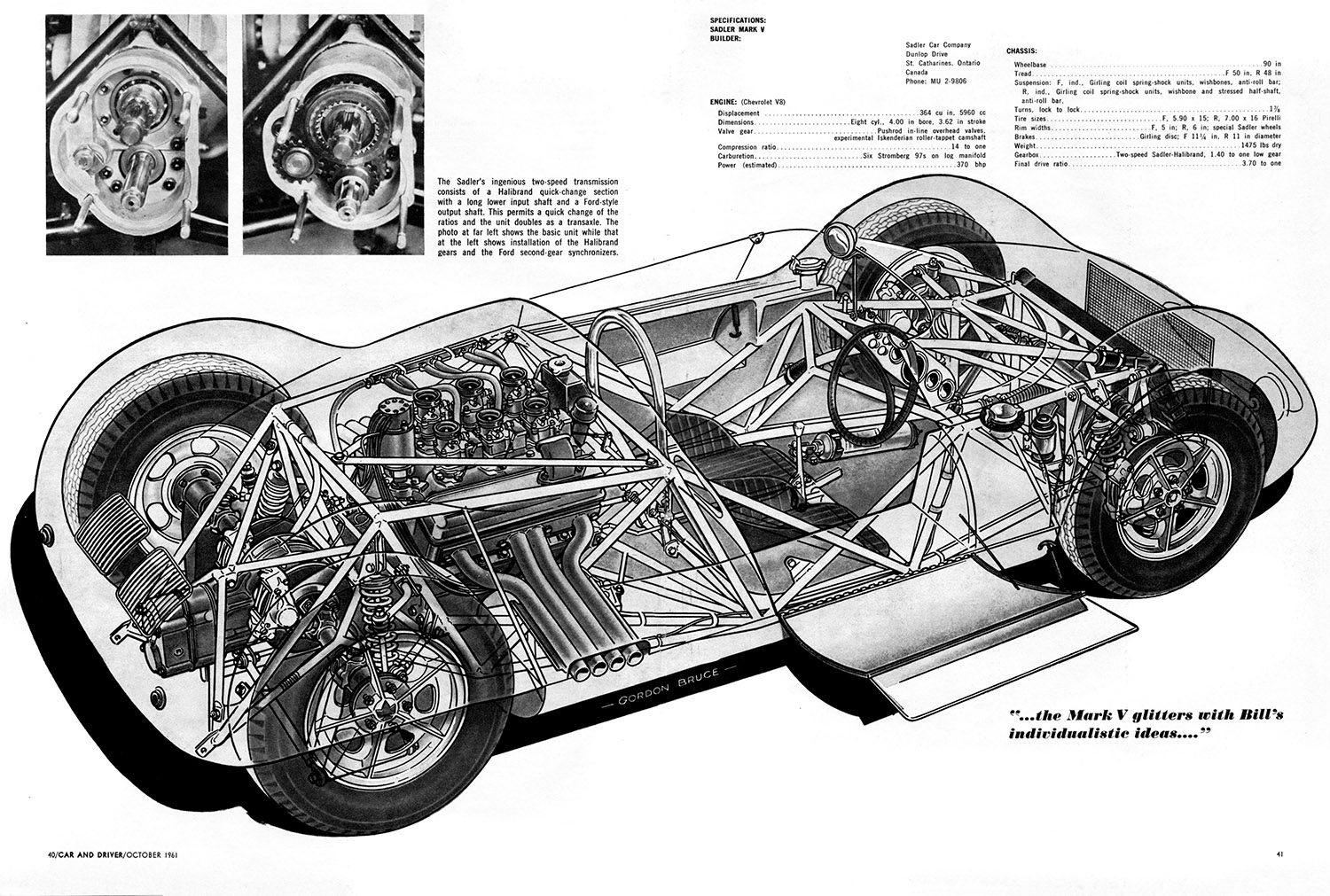
Evolved from the Formula Libre, the MK V was the first mid-engined sports racing Sadler, equipped with a full 377 ci Chevy engine. This was in 1961 and Sadler was still ahead of the curve with a Can-Am car before the Can-Am series. However, he did not use a monocoque chassis but stayed with a space frame.
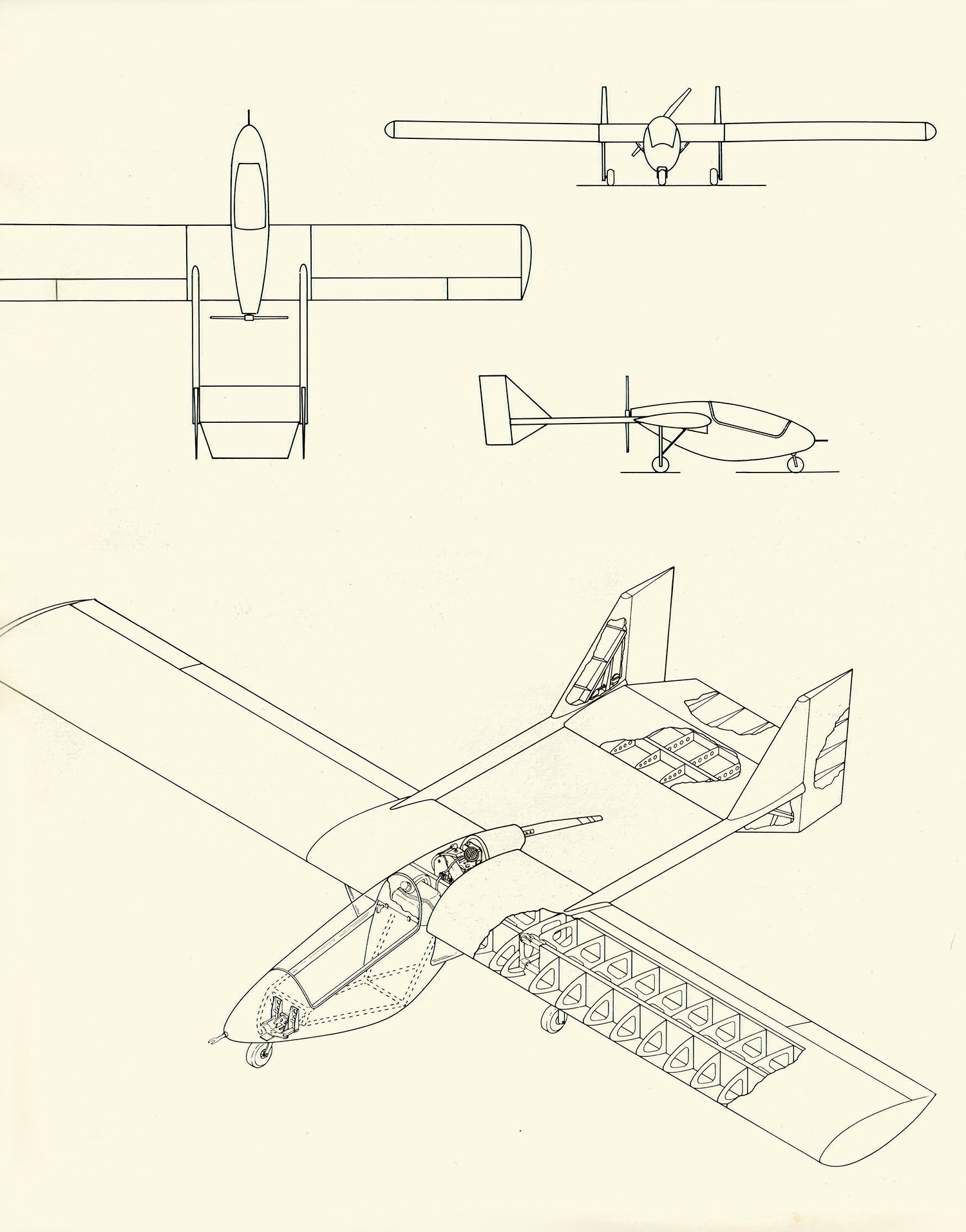
Sadler was first and foremost an aircraft designer, and here is a cutaway of his V-6 engined Vampire and founded American Microflight in 1983 to produce his aircraft. Author John Wright details Sadler’s aircraft construction in his comprehensive new book.
So that’s just the cars. Fast, Faster, Fastest covers a lot more acreage, with a helpful timetable, full specs on each of the Sadler cars, all race results of all models, contemporary articles and cutaways, many, many family and personal photos, the vintage racing years, and existing cars and owners. A must have for any enthusiast of the sports car scene of the 50s and 60s.
Author Information
John Robert Wright started racing in 1970, but after an undistinguished record and running out of money, switched from racing to writing about the drivers, mechanics and builders in the sport.
Initially, John’s stories of Canadian drivers and cars were published in the Canadian publication ‘Old Autos’ in Bothwell, Ontario followed by the California-based magazine ‘Victory Lane’. From there, other publications published interviews John was doing at vintage events and things took off from there.
Today, John goes to vintage events around the country, including Mosport, Road America, Watkins Glen and the Laguna Seca tracks. He and his racing friends meet and talk about how fast they were… or not.
Written with the full cooperation of Bill Sadler before he passed away in early 2022, this book contains never-before-seen photographs and rarely heard stories from a man whose talent, like an iceberg, lay nine tenths below the surface.
Book Information
230 x 280mm
392 pages
706 images
ISBN: 978-1-956309-03-4
First published April 2024
Signed copies (250) available only through the Publisher, more info to follow
https://www.daltonwatson.com/The-Bill-Sadler-Story-p/bill-sadler-story-reg.htm
Also available are signed copies of the book, click below.
https://www.daltonwatson.com/The-Bill-Sadler-Story-the-signed-edition-p/bill-sadler-story-signed.htm

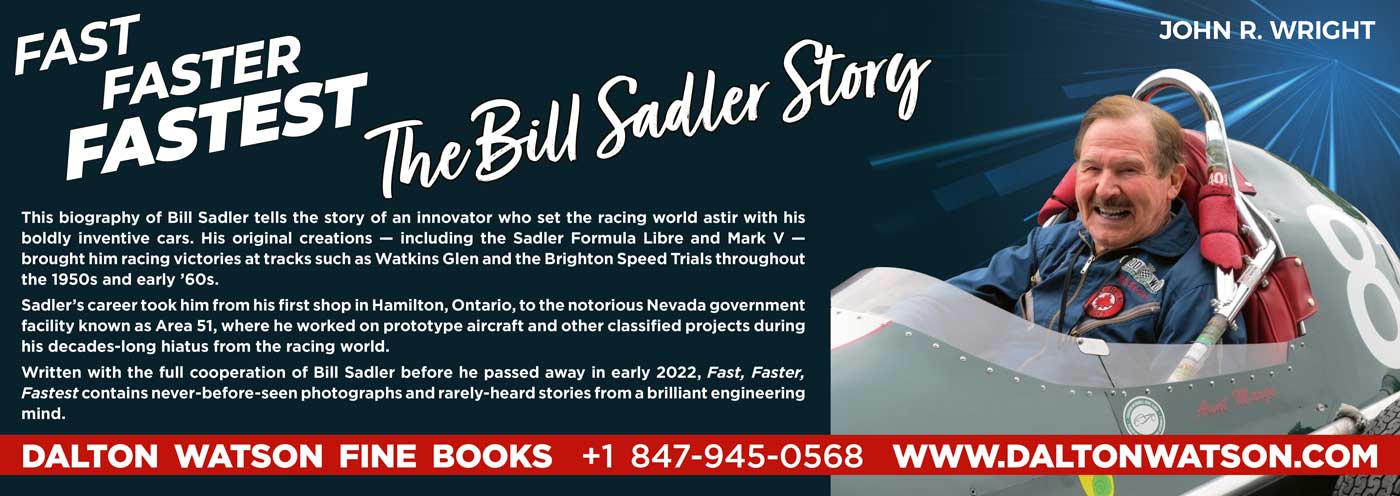
i saw what i was told was a sadler at, i think, a courtland, alabama scca regional in early ’63. seems like it had the headlights on the ends of pontoon/torpedo-like fenders. i was told it had a 2-speed gearbox and was at this race for testing purposes.
Kudos to John Wright for his time and effort to produce a book on Bill Sadler and his cars. Sadler was one of a genre that formed the background of sports car racing as all we seemed to talk about was Ferraris, Maseratis, etc. As a starry-eyed, mouth-hanging-open teenager, I attended the SCCA regionals at the Cocoa-Titusville Airport on February 14-15,1959 and saw a Sadler race. In fact, two Sadlers were listed on the entry list: #22 Sadler Mark II in C Modified driven by Paul Layman and #23 Sadler Mark III in B Modified driven by Bill Sadler. It was a non-spectator event so I had to use my most devious methods to get into the track, and once I got in I couldn’t get over to the paddock or pits as I would have been discovered for certain. With a standard lens on a twin-lens reflex camera, I tried to catch the cars speeding down the pit straight. Looking down into the rangefinder of the Rolleiflex camera made panning a moving car difficult. I had to hold the camera still at stomach-level and hopefully catch the car as it passed through the frame as it sped by – only possible with teenage reflexes! The only car that was a blur going by was Bill Sadler, showing how fast the Sadler was as I couldn’t catch him! A great piece of motor racing history!
How interesting to look at the other cars in your lead photo – at least two Mercedes Gullwings, a Porsche 550, two VWs as well as the expected T series MGs and at least one XK120
A few of us North Jersey teenagers went up to Watkins Glen in the fall of 1960 to catch the Formula Libre race, precursor to the many Grands Prix of the U. S. to follow, just to see the even-then legendary Stirling Moss perform. He and several of the European GP drivers were to stop-over in the finger lakes region to take part in that hodge-podge event on their way to the GP of the United States, at Riverside that year.
Moss was to drive Rob Walker’s Lotus 18/Climax, class of he field – but there was an interesting “Local Boy” entrant from St. Catharines, Ontario with a curious cigar-shaped red monoposto, the “Sadler Formula Libre,” to be driven by an 18-yr-old, Peter Ryan. Peter (and constructor Bill) surprised us all by qualifying 5th in the 18-car field, between “Jellybean” and “Salvo” (am I being too familiar? – Olivier Gendebien and Roy Salvadori), the surprise being, as you can see from the cutaway above, THE CAR HAD NO TRANSMISSION! That, and other difficulties, put the Sadler monoposto last of the finishers, but finish it did!
Walking the paddock one night at Monterey some 10 years ago now, I told that story to the mechanic working into the wee hours on a Sadler (of ‘Toly’s description above) at Monterey; he smiled, added some detail and held out freshly wiped hand: “_I’m_ Bill Sadler” he introduced – still wrenching, and DRIVING, his creations into the sunset of a very interesting life!
I had the chance to buy a Sadler Formula Junior in about 1975, in Winnipeg Canada. It was all apart in a number of boxes. I had no mechanical skills or knowledge, and no money for such a project, so I passed it by. I think the asking price for the boxes of bits was $300, maybe $500. I don’t remember who was selling it either. Sounds like a great book. I’ll have to buy it. I’ve always had a soft spot for Sadlers.